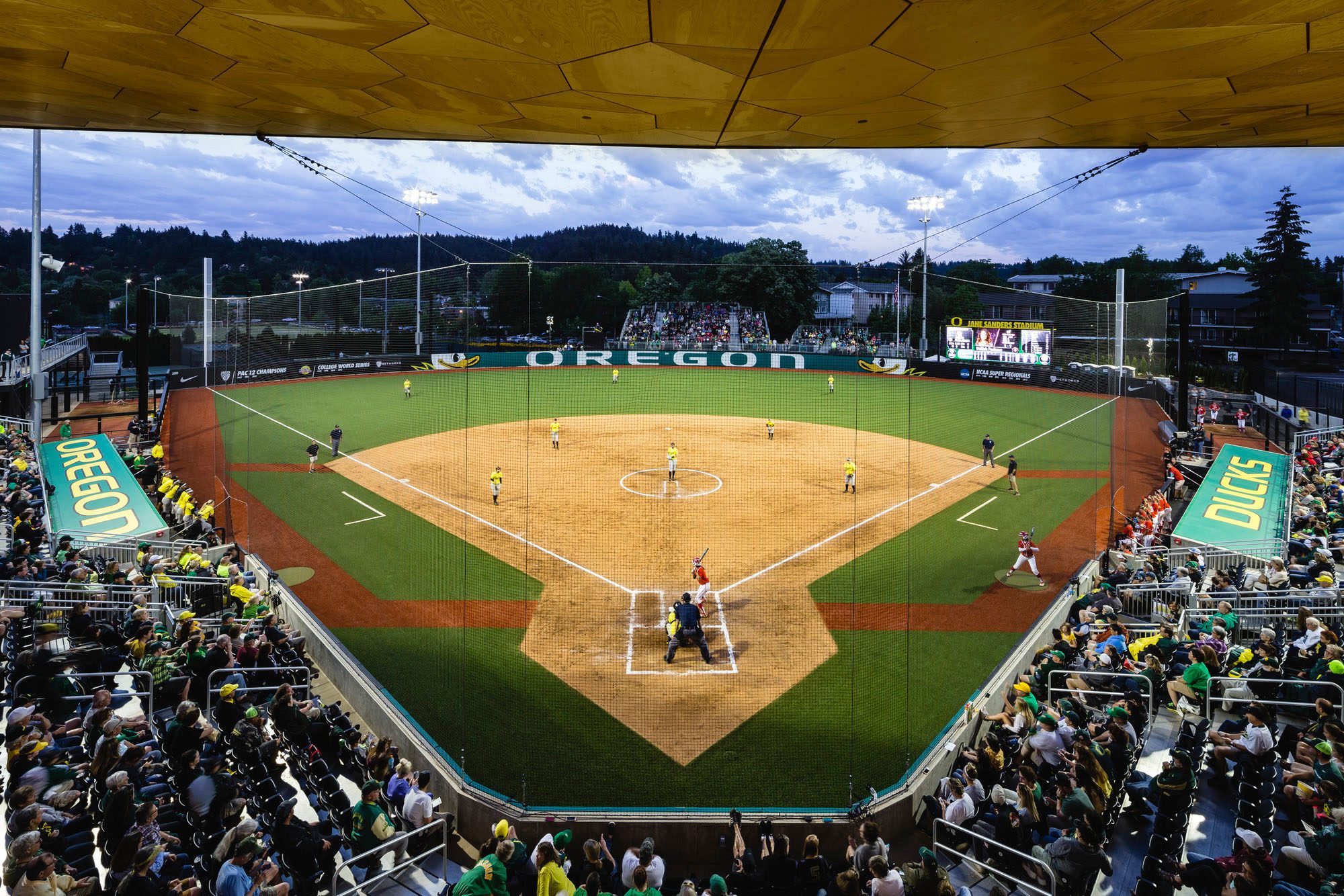In Honor of Jane
Today, Jane Sanders Stadium is home to one of the most innovative and respected athletic programs in the country, the five-time Pac-12 Conference championship Oregon Ducks Softball team. Made possible by a gift bestowed by lumber industry entrepreneur and UO alumni Robert Sanders, class of 1951, and named in honor of his late wife, Jane, class of 1950 and an avid supporter of Ducks softball, this state-of-the-art 1,500 fixed-seat outdoor stadium evokes power and strength. Its design befits of the stature of the university’s softball program and the devotion of its fan base.
Indeed, the highest priorities of the stadium’s design included fostering UO’s exceptional relationship between student-athletes and their fans, making the rigorous day-to-day routines of student-athletes a seamless experience, and enhancing the fabric of the University of Oregon campus.












